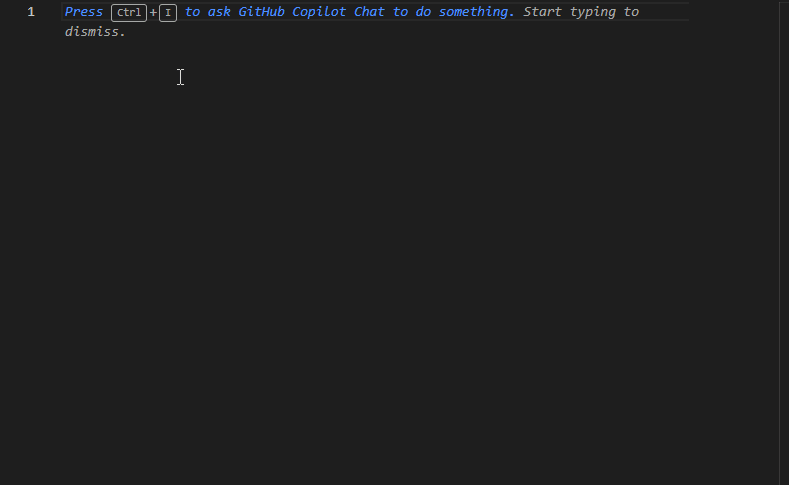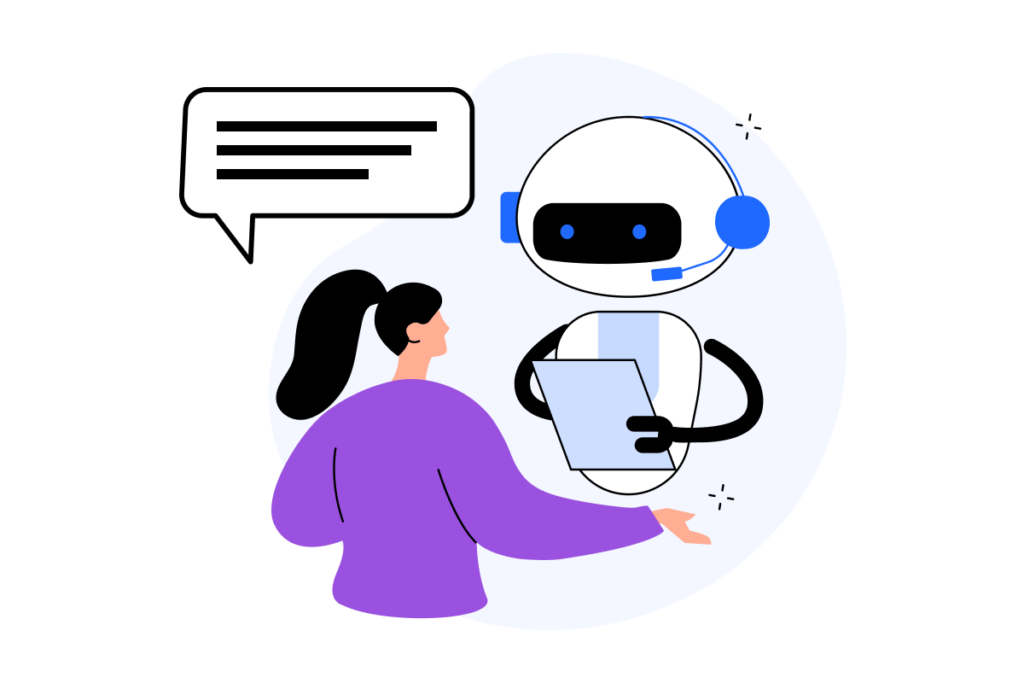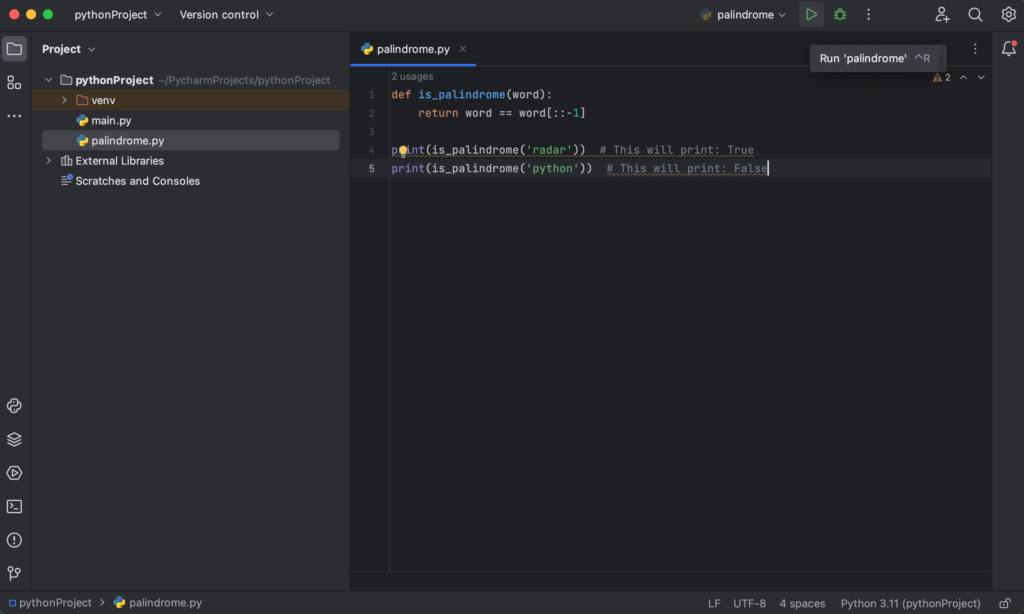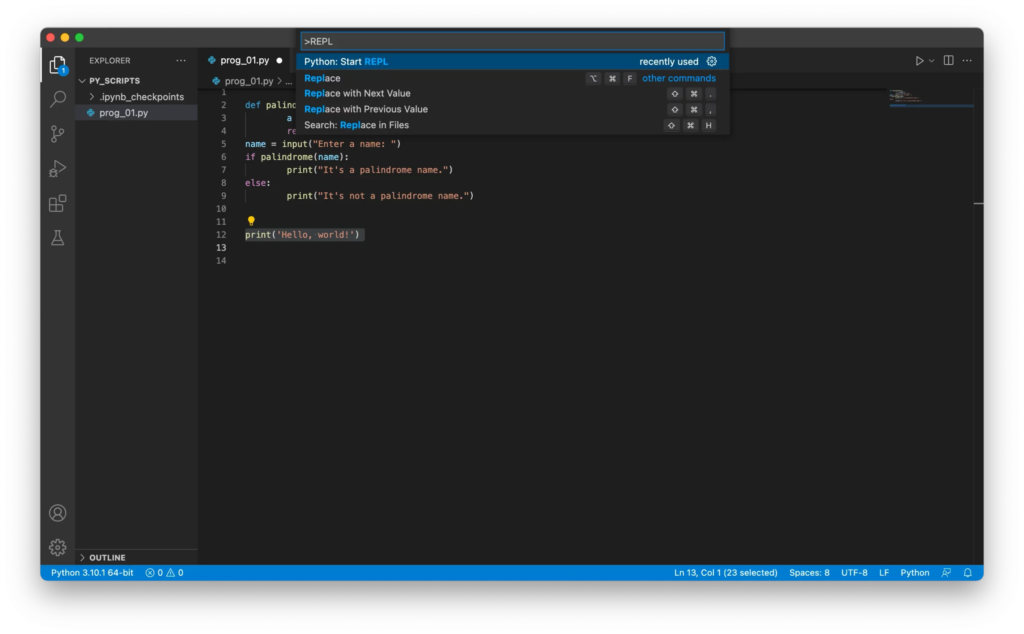What is an IDE and How Is It Used When Working with AI?
The AI development landscape is evolving rapidly, making Integrated Development Environments (IDEs) more important than ever.
With tools emerging like GitHub Copilot, IDEs have transformed, offering AI-driven code suggestions that streamline the development process. Forbes Advisor underscores this evolution with a projection of significant growth in the AI market, signaling a surge in demand for fluency with IDEs to create and work with complex AI tasks.

Amidst this technological shift, Dataquest's Generative AI Fundamentals in Python path equips you with vital skills. It focuses on Python programming and interaction with large language models (LLMs) via APIs, all while preparing you to transition to work on projects locally with an IDE.
By the end of this post, you'll be equipped with practical insights on how to leverage IDEs effectively in your AI projects. Ready to boost your development workflow? Let's get started!
What are IDEs?
Integrated Development Environments (IDEs) are comprehensive platforms that simplify the software development process with tools such as source code editors, build automation systems, and debuggers. They are pivotal in enhancing productivity and workflow efficiency.
The Evolution of IDEs
From their inception as basic text editors, IDEs have grown into sophisticated systems. They now offer advanced features like syntax highlighting, intelligent code suggestions, and version control integration. Modern IDEs even integrate artificial intelligence to assist developers more effectively. For instance, the introduction of AI-powered code completion tools in recent years marks a significant milestone, transforming how developers approach coding for AI by predicting the next line of code or suggesting corrections, leading to reduced errors and sped up project timelines.
Market Growth Forecasts
The need for advanced IDEs is growing alongside AI's increasing role in industry. Forbes Advisor projects the AI market will surge from \$86.9 billion in 2022 to about \$407 billion by 2027. This signals a growing demand for development tools capable of handling complex AI tasks. IBM also predicts that as AI deepens its integration across sectors, there will be a heightened need for IDEs with enhanced support for faster development cycles and better integration with AI libraries.
These insights not only highlight a mounting dependence on artificial intelligence but also emphasize the vital function that advanced IDEs will maintain in this evolving domain.
How IDEs Enhance Software Development
IDEs are crucial for streamlining software development by integrating essential tools into a single interface. This setup significantly increases efficiency, especially when working with complex AI projects where you need to use virtual environments, make multiple API calls, and balance many libraries or packages.
Key Components of an IDE
An IDE's power lies in its components:
- Source Code Editor: At the heart of every IDE, this editor enhances coding with syntax highlighting and AI-driven code completion.
- Build Automation: These tools automatically manage dependencies and compile code, saving developers from tedious manual setup.
- Debugger: Debuggers are vital for quickly finding and fixing code errors and ensuring the quality of software.
- Version Control: This component keeps track of code changes and facilitates team collaboration.
- AI-Powered Suggestions: Features like predictive text and smart navigation provide context-aware coding recommendations.

Streamlining Coding with AI Tools: An Example
Imagine a developer crafting an AI algorithm that will act as the “brain” of a chatbot. The source code editor in their IDE employs syntax highlighting to make the code easier to read and less prone to mistakes. As they type a Python snippet common in machine learning tasks, the AI-driven code completion suggests entire blocks of functional code, cutting down on coding time and boosting efficiency.
The developer’s AI algorithm also relies on multiple libraries for data handling and machine learning. The IDE's build automation system reads a configuration file to fetch and install these libraries correctly without any manual intervention, ensuring smooth operation.
When developing sophisticated AI algorithms like the chatbot in this example, developers often turn to their IDE's debugger for help. For instance, if an AI model behaves unexpectedly, the debugger's breakpoints and watch windows allow developers to examine variables or step through execution line-by-line. This leads to quick identification and correction of issues.
Without an IDE and the tools it provides, the AI algorithm would take this developer much longer to create. In essence, IDEs create powerful environments that speed up development cycles in artificial intelligence projects.
IDEs: Boosting Productivity Across Industries
Integrated Development Environments (IDEs) are not just tools for software developers — they are pivotal in enhancing productivity across industries like healthcare, finance, marketing, and more, by streamlining the development of cutting-edge AI applications. Let’s take a look at the diverse applications of IDEs and their role in development efficiency.
GitHub Copilot: Transforming Code Creation
GitHub Copilot, utilizing OpenAI's Codex model, showcases the power of IDEs to interpret natural language prompts into code suggestions on the fly. This tool instantly generates code snippets and functions from natural language prompts, streamlining the coding process and demonstrating AI's potential to simplify software development. In the GIF below, you can see how efficiently GitHub Copilot runs to help a developer create the beginnings of a simple “Hangman” program. Anytime there is grey text or text instantly appears, that is Copilot suggesting code with generative AI and the developer accepting it with a hotkey.

According to a McKinsey report, features like automated code validation and bug detection in IDEs can enhance developer productivity by up to 30%, a testament to the transformative power of tools like GitHub Copilot.
Healthcare Innovation Through AI
IDEs are instrumental in healthcare for developing AI tools that enhance patient care. For example, algorithms built within IDEs aid clinicians by delivering quicker, more precise diagnoses, leading to improved treatment outcomes.
Financial Services: Bank of America's AI Strategy
In finance, IDEs facilitate the creation of advanced AI applications for customer service and risk management. For example, Bank of America has utilized these tools since 2016 to enhance operations and customer engagement through data analytics.
Marketing: Crafting Targeted Campaigns
Marketing teams employ IDEs to build AI models that fine-tune customer segmentation and campaign effectiveness. These environments support the analysis of vast datasets for predictive analytics, enabling marketers to create highly personalized campaigns.
Linking these industry examples back to Dataquest's Generative AI Fundamentals in Python path, it’s clear to see the necessity of IDE fluency for efficient AI application development. Dataquest’s path equips learners with Python programming skills for AI tasks like the ones in the industry examples above — interfacing with large language models via APIs, creating chatbots through prompt engineering, and building practical web applications.
Navigating Challenges in AI Integration
While incorporating AI into Integrated Development Environments (IDEs) brings many benefits to development, it’s important to also consider the ethical and practical challenges as well. This section unpacks these complexities and underscores the necessity of responsible AI development.
Ethical and Societal Implications
The World Economic Forum's Global Risks Report warns of the risks associated with AI misuse, such as digital security breaches and the spread of misinformation. This report emphasizes the critical need for IDEs to adopt responsible development practices to counteract these dangers.
Balancing Innovation with Ethics
Forbes Tech Council and IBM Blog both highlight the ethical quandaries in merging generative AI with IDEs. They stress the importance of maintaining a balance between innovation and ethical practice, urging developers to consider how AI is applied within their tools.

Dataquest's Approach to Learning
Dataquest's Generative AI Fundamentals in Python path addresses these challenges by preparing learners to apply AI responsibly in development. The path provides essential knowledge on navigating ethical issues while teaching Python programming skills for interfacing with large language models through APIs.
Anticipating the Evolution of IDEs
According to Forbes Advisor, the AI market is projected to reach $407 billion by 2027. This growth signals a rising demand for advanced IDEs equipped to handle complex AI development projects, integrating features like real-time collaboration and advanced analytics.
Going forward, we can expect IDEs to offer more intuitive AI-driven code completion and sophisticated debugging tools. IBM Blog predicts that AI will be integrated across various sectors, necessitating robust support for AI and machine learning libraries within IDEs.
As we look toward deeper integration of generative AI into IDEs, it's clear that these technologies will equip developers with new capabilities that meet industry demands, something that is reflected in Dataquest's Generative AI Fundamentals in Python path through the inclusion of an entire course on tooling in Python in addition to the AI-focused content.
Adapting to a Rapidly Changing Development Environment
With the rise of artificial intelligence (AI), the development landscape is swiftly changing. To keep pace and maintain a competitive edge, it's crucial for both individuals and organizations to adapt through upskilling and incorporating advanced Integrated Development Environments (IDEs) into their workflows.
Streamline Workflows with Advanced IDEs
Advanced IDEs are at the core of modern software development, particularly with artificial intelligence. To effectively adopt these advancements:
- Assess Your Tools: Look at your current setup and pinpoint where IDEs could make your work more efficient.
- Adopt Gradually: Bring in new IDE features bit by bit to minimize disruption and help you adjust.
- Set Guidelines: Create clear rules for using these new capabilities to get the most out of them. For example, if you’re newer to programming try not to rely on AI code completion for all your tasks so that you can gradually understand more and more of the programming language.
Commit to Continuous Learning
Staying relevant in tech means never stopping learning. To keep your learning targeted, we recommend the following:
- Keep Updated: Stay on top of industry trends and new features in advanced IDEs.
- Practice Often: Use platforms like Dataquest to regularly sharpen your skills.
- Join Groups: Connect with online or local communities that focus on software development and emerging tech.
In short, adapting through upskilling with pathways like Dataquest's Generative AI Fundamentals in Python path, embracing advanced IDEs, and committing to ongoing learning are vital steps for successfully navigating the evolving tech landscape.
The Future is Collaborative
As we look ahead, IDEs are increasingly designed to enhance human expertise with AI capabilities. This partnership between developers and AI tools in IDEs is not about replacing human skills but enriching them, aligning with the broader trend of AI as a supportive ally across various industries.
New Roles in AI-Enhanced Software Development
The integration of AI into IDEs has led to the creation of new job roles that blend traditional programming abilities with the oversight of AI-driven processes. These positions are pivotal in managing the interplay between human developers and artificial intelligence to maintain an effective and ethical workflow.
For example, an AI model trainer works within the IDE to fine-tune machine learning algorithms using feedback loops. This requires solid coding knowledge along with insights into machine learning to steer the training process.
In a similar vein, an AI system controller ensures smooth interaction within the development environment, keeping automated workflows on track with project objectives and adjusting strategies for new technology integrations.
These evolving roles highlight the growing need for proficiency in modern IDEs for those at the cutting edge of software development.
Selecting the Right IDE
Choosing the right Integrated Development Environment is critical for AI development. The ideal IDE will support Python, the leading language in this field, and offer features that complement AI project workflows.
Top IDEs for Python and AI
For Python-centric AI development, consider these three IDEs:
- PyCharm: Designed for Python, PyCharm by JetBrains provides intelligent code assistance and integrates with Python's AI libraries, enhancing productivity in complex projects. Learn how to install PyCharm in this Dataquest blog post.

- Jupyter Notebook: Known for its interactive computing setup, Jupyter Notebook allows you to create documents with live code and visualizations, ideal for exploratory AI tasks and data analysis. Learn how to use Jupyter Notebooks in this Dataquest tutorial.

- Visual Studio Code (VS Code): A versatile editor from Microsoft, Visual Studio Code supports Python among other languages. It's lightweight but packed with features like IntelliSense and debugging tools that are useful in AI development. Learn how to install VS Code in this Dataquest blog post.

Get Set Up with Confidence
To set up your chosen IDE without hassle, turn to Dataquest's 'Selecting and Installing an Integrated Development Environment (IDE)' project. This guide walks you through the features of each IDE so you can make an informed choice tailored to your development preferences.
Selecting the right IDE sets a solid foundation for successful AI projects. With options like PyCharm, Jupyter Notebook, or Visual Studio Code at your disposal, and Dataquest's resources to back you up, you're well-equipped to face the challenges of Python-centric AI development head-on.
Python Proficiency: Essential for AI Development
Python stands out as a leading language in artificial intelligence due to its simplicity, readability, and extensive library ecosystem. For anyone aiming to work in AI, knowing Python is a must.
Python's versatility shines in AI development. It's used for data analysis, machine learning algorithms, and managing large datasets. Libraries like TensorFlow and PyTorch add powerful capabilities for building and deploying AI models effectively.
Building Skills from the Ground Up: Dataquest’s Generative AI Fundamentals in Python Path
Dataquest's Generative AI Fundamentals in Python path is tailored to instill these critical Python skills. The curriculum begins with the basics, gradually advancing to complex topics such as API interactions with large language models. This ensures that even novices can eventually craft code for sophisticated AI applications.
Here’s how the course unfolds:
- Basics First: Learners begin with Python syntax and core programming concepts.
- Hands-On API Use: The course then introduces API interactions with LLMs.
- Practical Applications: Finally, learners create web applications that put their skills into practice.
Each stage of the path builds upon the last, cementing a deep understanding that translates into real-world proficiency with generative AI tools and IDEs.
Dataquest focuses on practical applications rather than theoretical concepts, empowering learners to put their skills into action, whether it’s simple automation or complex applications powered by artificial intelligence.
In summary, Dataquest's Generative AI Fundamentals in Python path provides the foundational Python skills necessary for anyone starting out in the dynamic field of artificial intelligence. Armed with this education, learners are well-equipped to handle advanced development tasks within IDEs efficiently and effectively.
Understanding Tools and Frameworks
To excel in AI development, it's essential to know your way around certain tools and frameworks. Let's look at why AI APIs and Streamlit are the keys to building effective AI solutions and how Dataquest's Generative AI Fundamentals in Python path equips you with these skills.
- AI APIs: Becoming adept at using AI APIs like OpenAI’s
completionsAPI grants access to advanced machine learning features without needing to build intricate models from the ground up. - Streamlit: Empowers you to create interactive web applications for data analysis and machine learning projects quickly. It simplifies the process of turning data scripts into shareable web apps, making it easier for developers to showcase their work and for stakeholders to interact with the data insights directly.

Dataquest's Generative AI Fundamentals in Python path brings these tools into real-world contexts. Learners will use APIs to integrate their applications with sophisticated LLMs and showcase their work in a sleek and sharable Streamlit application. This practical learning method lets students experience tool integration within their projects directly.
Dataquest's Practical Learning Approach
At Dataquest, we believe in the power of hands-on learning. Our Dataquest's Generative AI Fundamentals in Python path is crafted to go beyond theory, equipping you with the practical skills needed for today's AI challenges. Unlike purely theoretical courses, we ensure you're ready to apply what you learn to real-world situations, preparing you for the demands of an AI-driven workplace.
Projects That Prepare You for Professional Life
Our path structure is intentional, incorporating projects that reflect the kind of work you'll encounter in your career. By tackling these projects, you'll gain valuable experience in creating functional AI applications and solving genuine problems. This project-based learning is key to preparing you for the complexities of generative AI challenges ahead.
IDE Proficiency: A Skill in Demand
Achieving proficiency with IIDEs is an intentional outcome of our path. In today's job market, being able to effectively use IDEs for AI projects sets you apart. As you progress through our learning path, you'll become skilled at using IDEs, not just coding in Python or using APIs but building and managing AI applications efficiently.
Dataquest stands out by merging conceptual knowledge with actionable skills. This dual focus is essential in a field as dynamic as artificial intelligence, where practical know-how translates into success.
In short, beginning your IDE exploration with Dataquest places you on a direct path to success in an AI-focused job market. It's where practicality meets foresight — start your journey today and build the expertise needed for tomorrow’s demands.